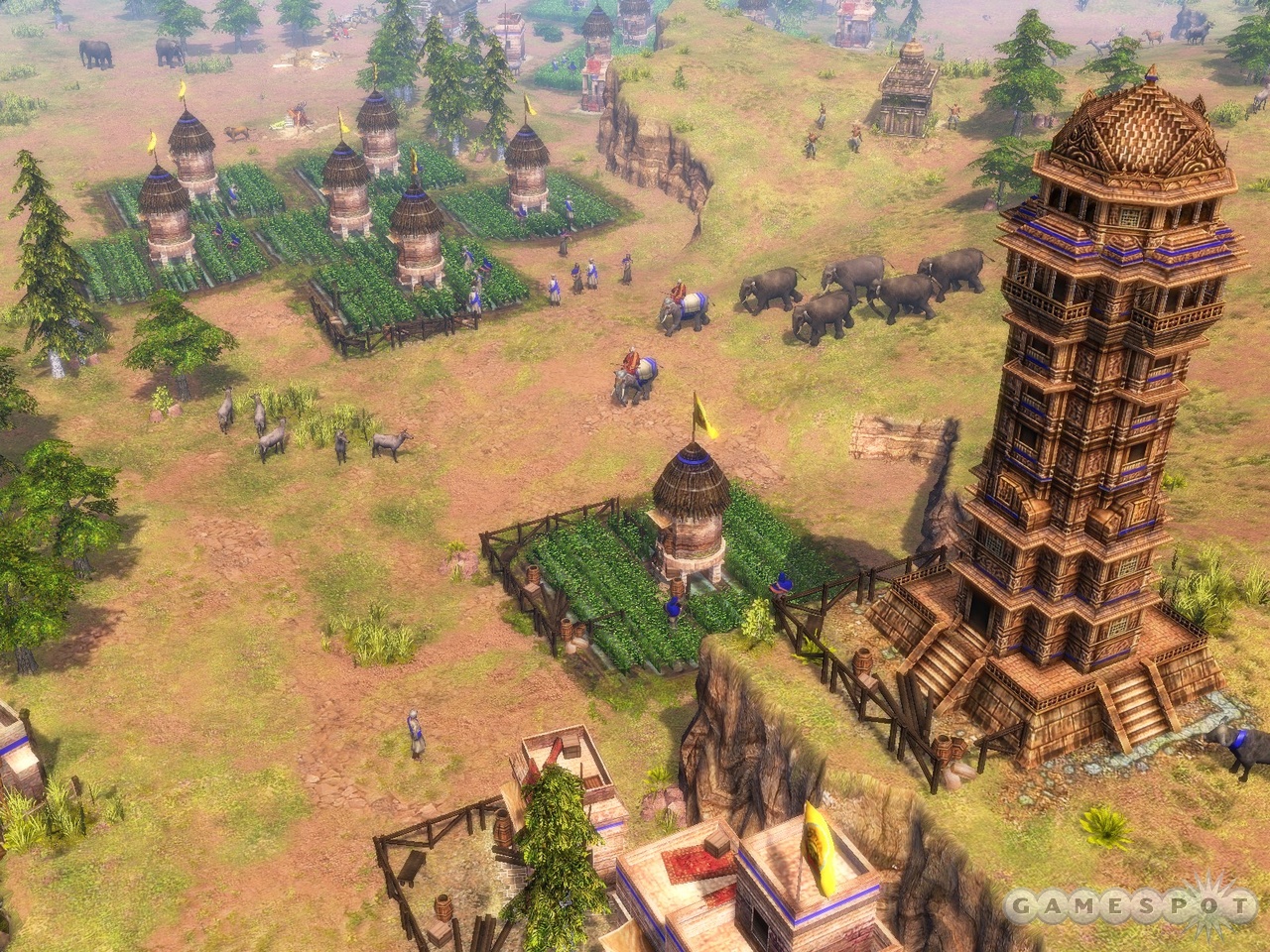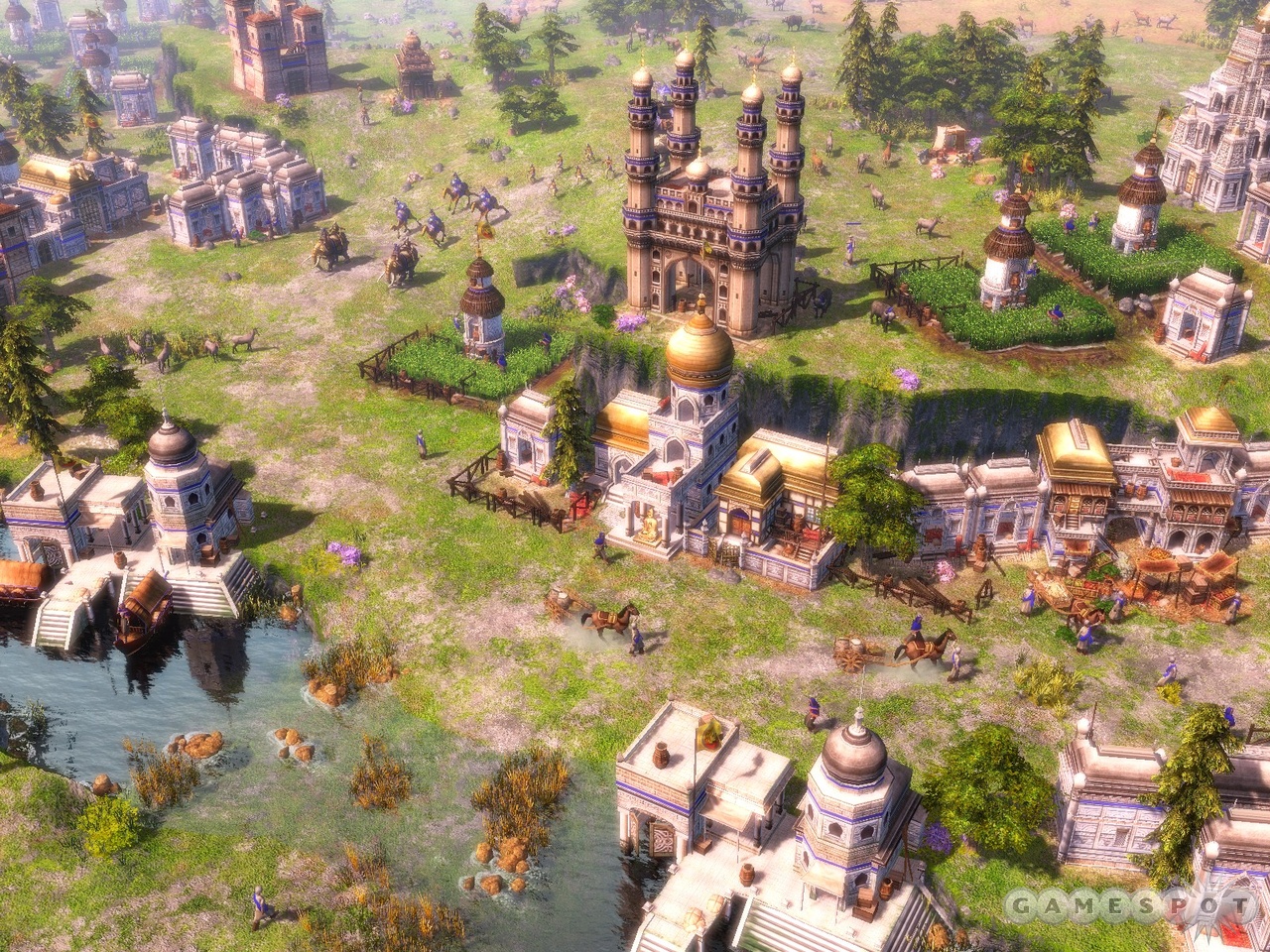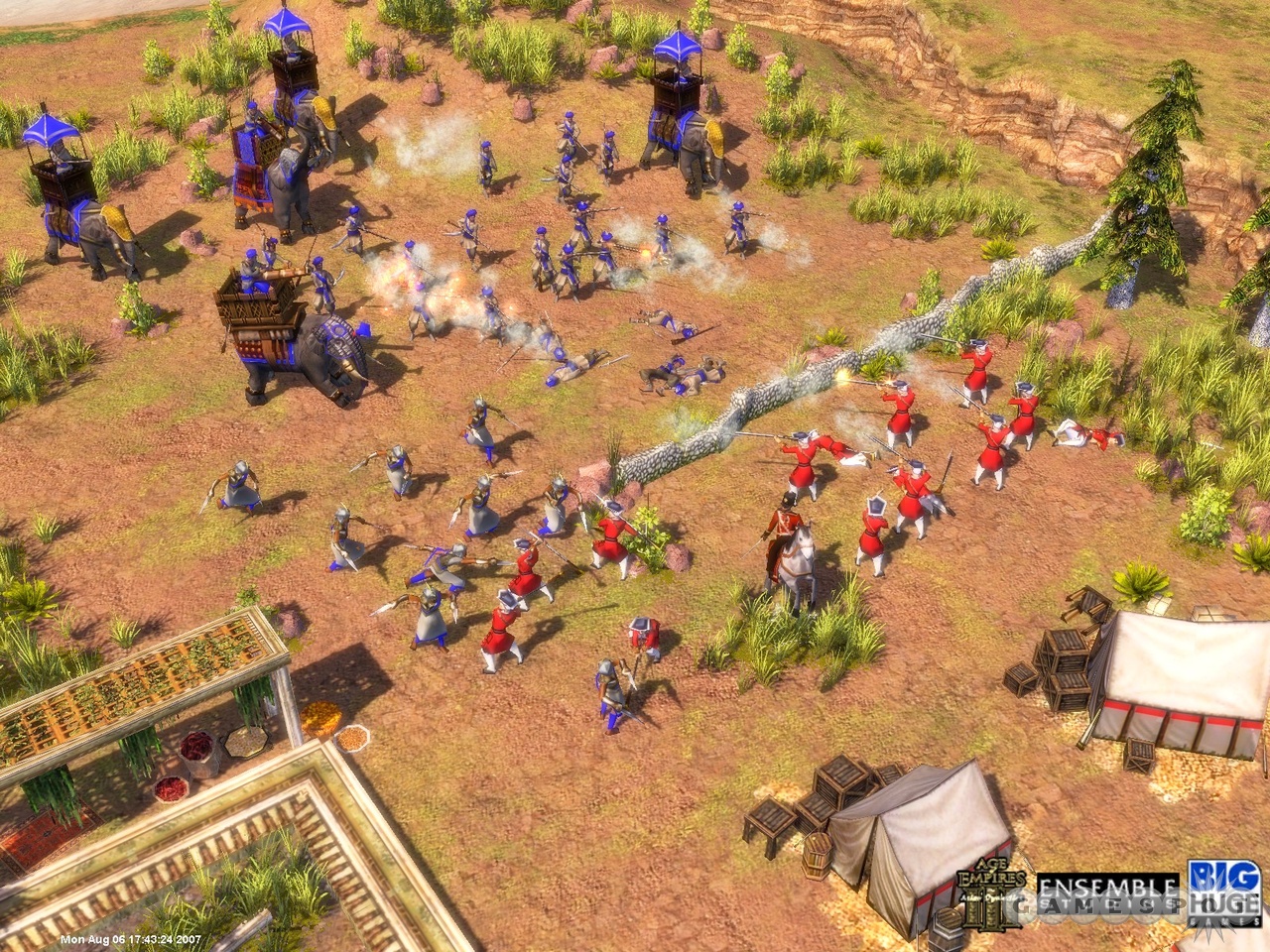Age of Empires III: The Asian Dynasties Updated Q&A - Details on India
Big Huge Games CEO Brian Reynolds unveils the India faction in this expansion pack for Age of Empires III.
Real-time strategy games may have left the realm of harvesting resources, building a base, and churning out armies to crush your opponent. Over time, we've seen them evolve from simple diversions, in which your little guys would bash a castle wall with their swords until it inexplicably caught fire, into sophisticated games with role-playing elements, world-affecting powers, and plenty of strategic depth. You can absolutely count the 2005 game Age of Empires III as one of the more advanced games out there. The series has always focused on real-world history, placing you as the ruler of one of the world's most powerful nations, and the latest game in the series introduced an unusual "home city" system that let you collect in-game cards that granted your nation exceptional abilities. The game has already gotten bigger thanks to The WarChiefs, last year's solid expansion pack that added Native American tribes to the game. Now it's set to expand further into the Far East with The Asian Dynasties, a new expansion pack that will introduce three new playable nations. This time around, we unveil the nation of India with help from Big Huge Games' Brian Reynolds.

GameSpot: Give us an overview of India as a faction. How is it unique, and what are its greatest weaknesses and strengths?
Brian Reynolds: India is quite a unique "civ," both for its military and for its economy. Paying wood instead of food to commission villagers creates a very different early build pattern, and massive elephant units give India a cavalry arm like no other.
GS: From what period of history will the India faction be drawn, and how has that affected the faction's design? For instance, the nation was, of course, a coveted trading partner that possessed rare commodities not easily available in the West. Can we expect to see some kind of economic specialization along these lines? Will any major historical events inform their design, such as the encroachment of British imperialists in the 19th century?
BR: The Indian faction is based on the history of the subcontinent throughout the period of the game, but most especially that of the Mughals, who ruled the largest and longest-lasting kingdom in the region at that time. Other units, such as the Gurkha, are drawn from the British colonial period. India's role as a key trading partner is partially reflected by the use of its consulate and the "export resource" ability to influence European allies (a mechanic, of course, shared in common with China and Japan, who were also much sought after for trade).
GS: Could you give us an overview of the armies this nation will command? How have you taken the real-world history of India and used that to create the Indian forces? About what level of technology will the faction possess?
BR: First, most importantly, and in a word: elephants. India represents the triumphant return of elephants to the Age of Empires series, and we're not just talking one kind of elephant here, either. There are mahouts with a powerful "splash damage" melee attack, howdahs full of archers that work as very powerful ranged cavalry, flail elephants with a melee attack that are powerful against buildings and siege units, and even massive siege elephants with cannons mounted on top!
As if these elephants weren't enough cavalry, India also features two types of camel units. Its infantry include the double-sword-wielding rajput, which falls somewhere between the rodelero and the pikeman, the sepoy, which functions as a powerful musketeer (though not as powerful as a janissary), and the Gurkha as a variant of skirmisher.
GS: If not looking for victory through force of arms, how should a player using the Indian faction approach the game? What are the primary facets of India's economic strategy, for instance, and how will the nation use wonders of the world to its advantage?

BR: The Indians are the best of the new factions for approaching the game from a more "peaceful" play style. For starters, the Taj Mahal wonder has a "cease fire" ability, which stops combat for a brief period. When an attack comes, this gives the Indian player extra time to complete defenses or enough time to advance to the next age. If that's not enough, the faction can also build the "Agra Fort" wonder, a large defensive structure that should deter all but the most serious of attacks. It functions as a weaker version of the European fort, shooting at enemy units as well as serving as another place to train units.
Economically, the Indians should present a change of pace for players who are familiar with the standard game mechanics. The big difference players will notice from the get-go is that their villagers "cost" wood instead of food to commission. This can present a challenge, since wood comes in slower than food. As compensation, the Indians get a free villager with every shipment from their home city. Another funny twist is that Indian livestock generates experience points, instead of being harvestable for food. This actually ends up being quite a large bonus, as the Indians can generate experience faster than almost any faction aside from the Japanese. Finally, as far as wonders go, if players want to boom, they should choose the Karni Mata. This provides a boost to the amount of resources gathered by nearby villagers.
GS: Any unique abilities or properties of the Indian home city? What unique card-related abilities will the faction have?
BR: Unlike other factions, India has no "settler" (or "villager") cards whatsoever. Instead, this nation receives a free villager with almost every card it sends. One interesting aspect of this difference is that instead of sending villagers as your first card, you can concentrate on the interesting strategy of your choice (Crates? "Pets" for your monks? Resource trickle?), and receive a villager alongside it.
GS: Tell us about the Indian nation's campaign, the time period it will cover, and the significant historical events it will include.
BR: The Indian campaign follows the events of the Sepoy Rebellion of 1857. The hero, Nanib, begins the campaign in the employ of the British East India Company, but rapidly becomes disillusioned with its cruel ways and joins the rebels. Although British rule persisted in India for nearly another century, this rebellion broke the back of the British East India Company and reduced its power and influence for good. The Indian campaign forms the final leg of our three campaigns (which run China, Japan, and India, in that order), and therefore includes some of our most dramatic and challenging episodes.
GS: How is the nation shaping up in multiplayer? Which strategies does India seem to work best with?

BR: In multiplayer games, a common strategy for India is to get to the fortress age quickly. It's at this point that the Indians gain access to most of their big, bad elephant units: the mahout, the howdah, and the selephant. They serve as heavy cavalry, ranged cavalry, and artillery, respectively. They are very expensive, but pound for pound, they are the toughest units in the game. Even a few of them are enough to wipe out hordes of enemy units, as well as destroy entire settlements.
The Indians also have some interesting wonders for tipping the balance in a battle. The tower of victory has the "inspiration" ability, which temporarily increases the attack, hit points, and speed of all military units. Elephants aren't truly scary until they're fast. For a longer-term boost, the Charminar Gate allows the training of special higher-ranking "mansabdar" versions of normal units. Mansabdars have twice the hit points of normal units and provide an attack and hit-point boost to nearby units of the same type.
GS: Sounds good. Thanks, Brian.
Got a news tip or want to contact us directly? Email news@gamespot.com
Join the conversation